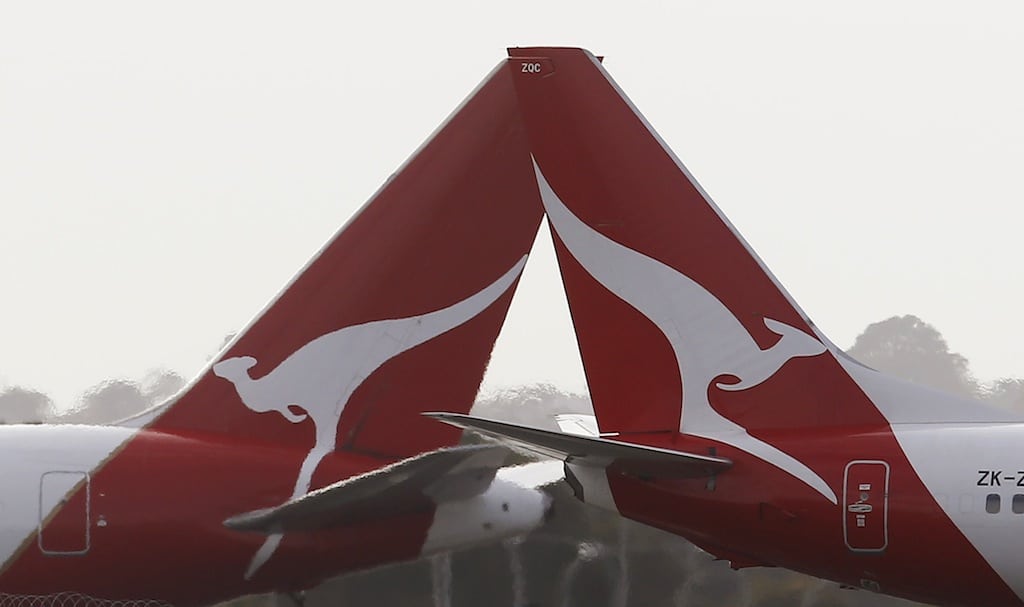Skift Take
Qantas needs to find a few cuts that don't appear to be a PR disaster.
Qantas is getting heat from the Australian Public and Members of Parliament for contemplating the removal of life rafts from its 737s, claiming that this would save the airline approximately $1 Million a year in fuel costs.
Senator for South Australia, Nick Xenophon, described the plan as “harebrained,” saying: “If a plane has to ditch off shore, every minute counts, and the savings are a joke.”
Qantas’ proposal would remove life rafts from aircraft flying within 400 miles from shore. This practice is not expressly disallowed by regulations.
As Qantas points out in their official statement: “It is common practice for airlines both here in Australia and internationally, to not carry life rafts on some aircraft, in accordance with safety regulations.”
The Civil Aviation Safety Authority of Australia (CASA) has said: “The rules do not require all commercial passenger flights within Australia to be fitted with life rafts. This is aligned with international standards for life rafts.”
The international standards for what constitutes an extended over-water route which would require life rafts and other life saving equipment do vary.
In the United States, the Federal Aviation Administration (FAA) has allowed airlines to fly without life rafts on board, though the limit for airline flights operating over water, with only primary flotation devices (life jackets or floating seat cushions), is 50 nautical miles from shore.
Above that limit, life rafts and/or slide rafts are required, and must include survival kits with first aid equipment, rations, an electronic locator transmitter (ELT), flares, a canopy for protection from the elements and other necessities for survival on the water while awaiting rescue.
Most aircraft accidents are likely to occur just after take-off or before landing, within the 50 nautical mile limits of the FAA regulations.
Many in the industry point out that a successful water ditching of an aircraft is rare. However, not all agree that this is reason enough to remove rafts from airplanes.
Passengers onboard the US Airways Flight 1549 relied on the slide-rafts aboard their aircraft to stay afloat while their aircraft took in water, as they waited for rescue. That was despite ditching right by the airport, with a quickly coordinated recovery mission.
Capt. Chesley “Sully” Sullenberger, who successfully landed this aircraft on the water, has become an advocate in favor of regulations requiring that aircraft carry life rafts at all times.
During a 2011 interview, he told CBS: “I think Flight 1549 proves that water landings can result in survival of everyone on the airplane, if there are slide rafts or life rafts in addition to life vests.”
Qantas insists it is not acting against the best interest of their passengers. “Any suggestions that we would compromise safety is wrong and scaremongering,” the airline says in its official statement; echoing this with the assurance: “Qantas would not implement any change that would compromise safety or CASA’s strict standards.”
Hearings scheduled Monday in the Australian Parliament, with this issue on the agenda, failed to address the topic of Qantas proposed removal of rafts by the time the proceedings ended. The issue rolls over to the hearing scheduled for Tuesday.
Xenophon points to the potential damage to Qantas public image. “People fly Qantas because it goes above and beyond the minimum regulatory requirements,” he says. “That’s brand Qantas.”
Brand Qantas has suffered recently from a number of ills, including having to defend themselves today from the repercussions of a report by the Australian Transport Safety Bureau on the presence of toxic fumes in aircraft cabins. Crew, who claim prolonged exposure has had detrimental effects on their health, are considering legal action.
To this latest issue, Dr Ian Hosegood, Qantas Director of Medical Services says: “Fume incidents across the Qantas fleet are extremely rare, particularly those from engine oil.” The official statement also emphasizes: “The safety of all passengers and crew is our number one priority.”
Marisa Garcia has worked in aviation since 1994, spending 16 years on the design and manufacturing of cabin interiors and cabin safety equipment. She shares insights gained from this experience on Flight Chic and Tweets as @designerjet.
The Daily Newsletter
Our daily coverage of the global travel industry. Written by editors and analysts from across Skift’s brands.
Have a confidential tip for Skift? Get in touch
Tags: australia, qantas, safety
Photo credit: Two Qantas passenger jets cross each other at Kingsford Smith International airport in Sydney June 27, 2013. Daniel Munoz / Reuters
